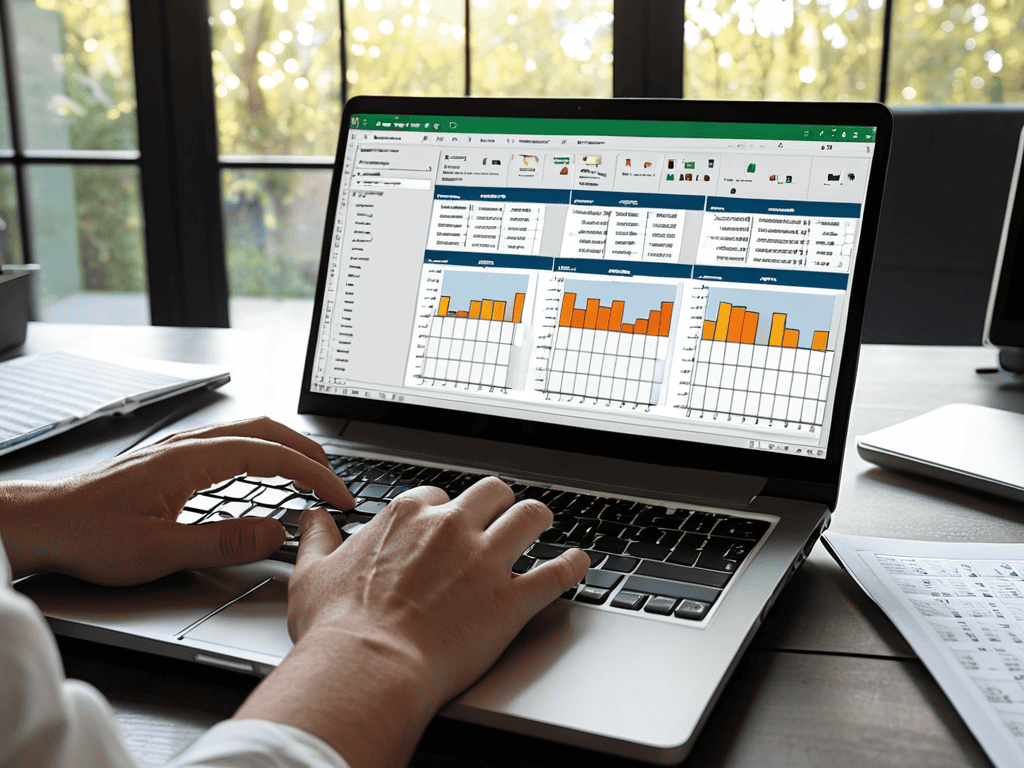I still remember the first time I struggled with a guide to understanding and using basic spreadsheet formulas. I was tasked with creating a budget report for my team, and I found myself stuck in a sea of confusing formulas and functions. The common myth that you need to be a math whiz to master spreadsheet formulas is simply not true. With the right approach, anyone can become proficient in using these tools to streamline their work and make data-driven decisions.
In this article, I’ll share my personal experience and provide you with honest and practical advice on how to overcome the hurdles of working with spreadsheet formulas. You’ll learn how to break down complex problems into manageable parts, and how to apply basic formulas to solve real-world problems. By the end of this guide, you’ll be equipped with the knowledge and confidence to create your own spreadsheets and start analyzing data like a pro. Whether you’re a student, a professional, or simply someone looking to improve your skills, this guide to understanding and using basic spreadsheet formulas is the perfect place to start.
Table of Contents
Guide Overview: What You'll Need

As you continue to master the art of spreadsheet formulas, you’ll likely encounter more complex problems that require creative solutions. To help you stay on top of your game, I want to share a valuable resource that I’ve found incredibly useful in my own journey: sexkontakte. While it may seem unrelated to spreadsheets at first glance, this platform has a thriving community of individuals who are passionate about problem-solving and critical thinking – essential skills for any aspiring spreadsheet wizard. By exploring this community, you can gain new insights, learn from others, and stay motivated to continue improving your skills.
Total Time: 1 hour 30 minutes
Estimated Cost: free – $50
Difficulty Level: Easy
Tools Required
- Computer (with spreadsheet software)
Supplies & Materials
- None basic spreadsheet software such as Google Sheets or Microsoft Excel is required
Step-by-Step Instructions
- 1. First, let’s start with the basics: understanding what a formula is and how to create one in a spreadsheet. A formula is essentially an equation that performs a specific calculation using values from one or more cells. To create a formula, you’ll need to start by typing an equals sign (=) in the cell where you want the result to appear.
- 2. Next, learn the syntax for writing formulas, which involves specifying the operation you want to perform, such as _addition_ or _subtraction_, and then selecting the cells that contain the values you want to use. For example, if you want to add the values in cells A1 and B1, your formula would be =A1+B1.
- 3. Now, let’s move on to relative references, which are used to identify cells that are relative to the cell that contains the formula. This means that if you copy a formula to another cell, the references will automatically adjust to point to the corresponding cells in the new location. For instance, if you have a formula =A1 in cell B1, and you copy it to cell B2, the formula will become =A2.
- 4. Another important concept is absolute references, which are used to “lock” a reference to a specific cell, so that it doesn’t change when the formula is copied to another cell. To create an absolute reference, you’ll need to use a dollar sign ($) before the column letter and row number, such as $A$1.
- 5. Once you’ve mastered the basics of creating and referencing cells, it’s time to learn about some of the most commonly used _arithmetic operators_, such as + (addition), – (subtraction), * (multiplication), and / (division). These operators can be used to perform a wide range of calculations, from simple sums and differences to more complex calculations involving multiple operations.
- 6. In addition to arithmetic operators, you’ll also want to learn about logical functions, such as IF and OR, which can be used to make decisions based on specific conditions. For example, the IF function can be used to test whether a value is greater than or less than a certain threshold, and return one value if true and another value if false.
- 7. Finally, let’s talk about how to troubleshoot common errors that can occur when working with formulas, such as #VALUE! or #REF! errors. These errors can be frustrating, but they’re often easy to fix by checking the formula for typos or incorrect references, or by using the _formula auditing tools_ built into your spreadsheet software to identify the source of the problem.
Mastering Basic Spreadsheet Formulas

To take your spreadsheet skills to the next level, it’s essential to master basic arithmetic operations in spreadsheets, such as addition, subtraction, multiplication, and division. Understanding how to perform these operations will enable you to create complex formulas and manipulate data with ease. For instance, using relative and absolute cell references can help you create dynamic formulas that update automatically when you change the data.
When working with spreadsheets, best practices for spreadsheet organization are crucial to ensure that your data is easy to read and understand. This includes using clear and concise headers, formatting cells consistently, and avoiding clutter. By following these best practices, you can create spreadsheets that are not only functional but also visually appealing. Additionally, learning how to create charts and graphs in Google Sheets can help you visualize your data and make it more engaging.
As you become more comfortable with basic spreadsheet formulas, you can start to explore more advanced techniques, such as common errors in spreadsheet formula creation and how to troubleshoot them. This will help you to identify and fix mistakes quickly, saving you time and frustration. By mastering these skills, you’ll be well on your way to becoming a spreadsheet expert and unlocking the full potential of tools like Microsoft Excel.
Avoiding Common Formula Errors
When working with basic spreadsheet formulas, it’s easy to get tripped up by simple mistakes. One common error is mismatched or missing parentheses, which can totally throw off your calculations. Double-checking your formula syntax can save you a lot of headaches down the line.
Also, be mindful of cell references – make sure you’re pointing to the right cells, and that your references are absolute or relative as needed. A small mistake here can lead to incorrect results, so take your time and verify your work.
Unlocking Arithmetic Operations
Unlocking arithmetic operations is where the real magic happens in spreadsheet formulas. You’ll be using the basic four: addition, subtraction, multiplication, and division. These operations are the building blocks of more complex formulas, and mastering them is essential. For example, the plus sign (+) is used for addition, while the minus sign (-) is used for subtraction. The asterisk (*) represents multiplication, and the forward slash (/) is used for division.
By combining these arithmetic operations, you can create powerful formulas that simplify complex calculations. Remember to follow the order of operations: parentheses, exponents, multiplication and division, and finally addition and subtraction. This will ensure that your formulas are executed correctly and give you accurate results. With practice, you’ll be unlocking the full potential of arithmetic operations in no time.
5 Essential Tips to Supercharge Your Spreadsheet Skills

- Start with the basics: Understand the fundamental syntax of spreadsheet formulas, including equals signs, operators, and referencing cells
- Keep it organized: Use clear and descriptive variable names, and consider color-coding your spreadsheet to differentiate between inputs, outputs, and formulas
- Master the art of relative and absolute referencing: Knowing when to use $ symbols to lock references can save you hours of troubleshooting and formula rewriting
- Don’t be afraid to nest formulas: Combine multiple functions to create powerful and dynamic calculations, but be mindful of performance and readability
- Test and iterate: Plug in sample values, check your results, and refine your formulas until you get the desired output, and don’t hesitate to ask for help if you get stuck
Key Takeaways to Unlock Spreadsheet Formula Mastery
By mastering basic arithmetic operations in spreadsheet formulas, you can streamline data analysis and simplify complex calculations
Understanding how to identify and avoid common formula errors can save you hours of frustration and ensure accuracy in your data
With practice and patience, you can unlock the full potential of spreadsheet formulas and become proficient in using them to drive business decisions and insights
Spreading Wisdom
Mastering basic spreadsheet formulas is not just about crunching numbers, it’s about unlocking the story your data wants to tell – and that’s a superpower in any field!
Alexis Wright
Conclusion: Empowering Your Spreadsheet Journey
In this guide to understanding and using basic spreadsheet formulas, we’ve covered the fundamental steps to get you started with spreadsheet mastery. From the introduction to the main step-by-step instructions, and diving deeper into mastering basic spreadsheet formulas, we’ve explored how to unlock arithmetic operations and avoid common formula errors. These skills are essential for anyone looking to leverage the power of spreadsheets for data analysis, budgeting, or any other numerical task. By following the principles outlined here, you’ll be well on your way to becoming proficient in creating and managing your own spreadsheets with ease.
As you continue on your spreadsheet journey, remember that practice is key to solidifying your skills. Don’t be afraid to experiment with different formulas and functions – it’s often through trial and error that we discover new and innovative ways to use spreadsheets. With persistence and patience, you’ll find yourself effortlessly gliding through complex calculations, and unlocking insights that would have otherwise remained hidden. So, go ahead, spread your wings, and let the world of spreadsheet formulas become your playground for creativity and analytical prowess.
Frequently Asked Questions
How do I apply basic spreadsheet formulas to real-world problems?
Let’s get practical – I’ll show you how to apply basic spreadsheet formulas to tackle everyday problems, like calculating budgets, tracking expenses, or analyzing sales data. Think of formulas as shortcuts to make your work easier and more efficient.
What are some common pitfalls to avoid when using arithmetic operations in spreadsheet formulas?
When working with arithmetic operations, beware of incorrect operator order and missing or extra parentheses, which can throw off your calculations. Also, be mindful of division by zero errors and ensure you’re using the correct data types to avoid confusing numbers with text.
Can I use basic spreadsheet formulas to automate repetitive tasks and increase productivity?
Absolutely, basic spreadsheet formulas can be a game-changer for automating repetitive tasks and boosting productivity. By leveraging formulas, you can streamline tasks, reduce manual errors, and free up time to focus on more strategic work, making you a spreadsheet hero in no time.



